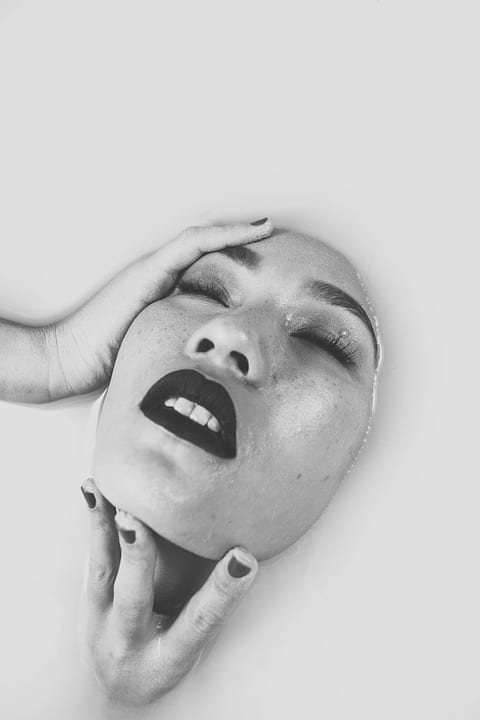Everybody loves to have a face free of blemishes, but not everyone is fortunate enough to have a clear skin. Warts, scars and pock marks are things which everyone would be glad to get rid of and skin conditions like leukoderma can ruin a person’s self confidence.
Fortunately, today there are cosmetic procedures which can help improve the appearance and thereby the body image. Dermatologists are doing more of these procedures on an out-patient basis.
Electrosurgery:
Electrically generated heat is used to destroy unwanted growths like warts, tags (commonly seen projections on the neck and around the armpits).
A local anaesthetic injection is usually required. Superficial treatment leaves minimum or no scarring, but may cause hyperpigmentation or hypopigmentation i.e. increase or decrease in skin colour, respectively, which is often temporary, but occasionally permanent.
Cryosurgery:
Cryosurgery makes use of local freezing for controlled treatment of unwanted tissues.
The different substances used for freezing are liquid nitrogen, nitrous oxide and carbon dioxide slush or snow. Liquid nitrogen is the most effective, especially when used with a special spraying unit. It is indicated in growths like warts, tags, swellings arising from pimples like acne cysts and thick scars otherwise known as keloids.
The person undergoing treatment usually experiences a stinging sensation. The pain is tolerable and no anaesthesia is required especially for small lesions. A crust forms and it generally falls off in 7-10 days. Repeated treatments may be necessary for removing the growths completely.
Hyperpigmentation can occur and it usually fades away with time. Hypopigmentation, especially in dark skins, can sometimes persist. A test treatment can be done if a number of lesions are to be treated. Liquid nitrogen is not easily available and so the procedure is available only at a few centres.
Chemical peeling:
It is done by application of chemical agents to the skin so as to cause controlled chemical burns resulting in superficial destruction followed by resurfacing. For the average Indian skin, only superficial peel is suitable. This is used for hyperpigmentation, scars and ageing due to exposure to the sun.
Spot peeling is for few and well localised lesions like freckles, acne and melasma (the pigmentation which appears commonly on the cheeks and nose). Multiple treatments are necessary to achieve the desired result.
Excision:
It is the age-old method of cutting out small growths like moles. It is done under local anaesthesia. It leaves a thin scar when uncomplicated by infection. It is often the best method for single or few small lesions.
Dermabrasion:
It consists of planing of the skin with manual or electrical abraders and allowing it to heal so as to achieve a levelling effect, thereby making scars or other lesions less visible.
It can be used for treating scars caused by pimples or chicken pox, thickened or raised lesions like chronic patches of eczema, non-cancerous skin tumours and birthmarks etc. Patches of leukoderma which remain unchanged for years or are unresponsive to medical treatment are being treated by dermabrasion with some good results.
However, pigment changes remain the main problem. One can except a fair improvement of about 50 to 80 per cent.
Grafting:
It is a process by which a piece of skin from one part of the body (donor area) is transferred to another part (recipient site) where it gets established.
Cosmetically it is used by dermatologists mainly for stable leukoderma. The donor area remains permanently changed which can be a disadvantage Punch grafting is used for leukoderma, small scar removal and hair transplanting.
In this, grafts of a few millimetres diameter and of varying depths are used to fill in gaps caused by the removal of skin from the site being treated. The drawbacks are that it may leave an uneven mottled surface.
Tattooing:
It is the process of implanting pigments (colours) into the skin for permanent effect, by using manual or electrically driven needless.
It is used for small static patches of leukoderma, to fill up gaps of alopecia (hair loss) and for permanent eye-lining, lip-lining and beauty spots. Loss of pigment due to too superficial or deep implantation and mismatching are some of the problems. It is best suited for lip vitiligo in dark-skinned individuals.
A touch-up tattoo may be required after three to four weeks. The pigment hardly changes after three to four months and lasts for at least 10 years.
Laser treatment:
Lasers are being used to treat various skin conditions. Different types of laser systems are required for treating different types of skin conditions such as lesions, scars, pigmentation and blood vessel-related problems.
The high cost is a limitation. Complications such as scarring, pigmentation changes and texture damage can occur. There are some other procedures like epilation (hair removal) by electro/thermolysis, corn removal, chemical cauterisation which are also done by many dermatologists.
Except for full facial dermabrasion, most of them are out-patient procedures requiring no admission or hospital stay. The limitations are consequent colour changes and scarring. However, an experienced doctor can minimize these side-effects.





Be the first to comment on "Give your face a new look"